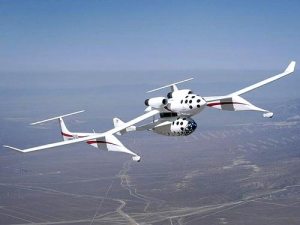
Casey Rodgers/AP Images for XBox
Microsoft demonstrated its Project Natal, a new way to play Xbox without touching any device, at an electronics show in June.
Published: January 11, 2010
LAS VEGAS — The technology industry is going
retro — moving away from remote controls, mice and joysticks to
something that arrives without batteries, wires or a user manual.
It’s called a hand.
In the coming months, the likes of Microsoft, Hitachi
and major PC makers will begin selling devices that will allow people
to flip channels on the TV or move documents on a computer monitor with
simple hand gestures. The technology, one of the most significant
changes to human-device interfaces since the mouse appeared next to
computers in the early 1980s, was being shown in private sessions
during the immense Consumer Electronics Show
here last week. Past attempts at similar technology have proved clunky
and disappointing. In contrast, the latest crop of gesture-powered
devices arrives with a refreshing surprise: they actually work.
“Everything
is finally moving in the right direction,” said Vincent John Vincent,
the co-founder of GestureTek, a company that makes software for gesture
devices.
Manipulating the screen with the flick of the wrist will remind many people of the 2002 film “Minority Report” in which Tom Cruise
moves images and documents around on futuristic computer screens with a
few sweeping gestures. The real-life technology will call for similar
flair and some subtlety. Stand in front of a TV armed with a gesture
technology camera, and you can turn on the set with a soft punch into
the air. Flipping through channels requires a twist of the hand, and
raising the volume occurs with an upward pat. If there is a photo on
the screen, you can enlarge it by holding your hands in the air and
spreading them apart and shrink it by bringing your hands back together
as you would do with your fingers on a cellphone touch screen.
The gesture revolution will go mainstream later this year when
Microsoft releases a new video game system known at this time as
Project Natal. The gaming system is Microsoft’s attempt to one-up
Nintendo’s Wii.
Where the Wii requires hypersensitive hand-held
controllers to translate body motions into on-screen action,
Microsoft’s Natal will require nothing more than the human body.
Microsoft has demonstrated games like dodge ball where people can jump,
hurl balls at opponents and dart out of the way of incoming balls using
natural motions. Other games have people contorting to fit through
different shapes and performing skateboard tricks.
Just as
Microsoft’s gaming system hits the market, so should TVs from Hitachi
in Japan that will let people turn on their screens, scan through
channels and change the volume on their sets with simple hand motions.
Laptops and other computers should also arrive later this year with
built-in cameras that can pick up similar gestures. Such technology
could make today’s touch-screen tools obsolete as people use gestures
to control, for instance, the playback or fast-forward of a DVD.
To
bring these gesture functions to life, device makers needed to conquer
what amounts to one of computer science’s grand challenges. Electronics
had to see the world around them in fine detail through tiny digital
cameras. Such a task meant giving a TV, for example, a way to identify
people sitting on a couch and to recognize a certain hand wave as a
command and not a scratching of the nose.
Little things like
the sun, room lights and people’s annoying habit of doing the
unexpected stood as just some of the obstacles companies had to
overcome.
GestureTek, with offices in Silicon Valley and
Ottawa, has spent a quarter-century trying to perfect its technology
and has enjoyed some success. It helps TV weather people, museums and
hotels create huge interactive displays.
This past work,
however, has relied on limited, standard cameras that perceive the
world in two dimensions. The major breakthrough with the latest gesture
technology comes through the use of cameras that see the world in three
dimensions, adding that crucial layer of depth perception that helps a
computer or TV recognize when someone tilts their hand forward or nods
their head.
Canesta, based in Sunnyvale, Calif., has spent 11
years developing chips to power these types of 3-D cameras. In the
early days, its products were much larger than an entire desktop
computer. Today, the chip takes up less space than a fingernail. “We
always had this grand vision of being able to control electronics
devices from a distance,” said Cyrus Bamji, the chief technology
officer at Canesta. Competition in the gesture field has turned fierce
as a result of the sudden interest in the technology. In particular,
Canesta and PrimeSense, a Tel Aviv start-up, have fought to supply the
3-D chips in Microsoft’s Natal gaming system.
At last week’s
Consumer Electronics Show in Las Vegas, executives and engineers from
Canesta and GestureTek were encamped in suites at the Hilton near the
main conference show floor as they shuttled executives from Asian
electronics makers in and out of their rooms for secretive meetings.
Similarly,
PrimeSense held invitation-only sessions at its tiny, walled-off booth
and forbade any photos or videos of its products.
In one
demonstration, a camera using the PrimeSense chip could distinguish
among multiple people sitting on a couch and even tell the difference
between a person’s jacket, shirt and under-shirt. And with such
technology it’s impossible, try as you might, to lose your remote
control





